We are excited to bring you the first alpha release of 2023.1. There are many additions and changes, and there is more to come for the first stable release of 2023.1.
Important: to give us the time to improve and perfect the quality and performance of Brigade as a production tool, we have had to make the difficult decision to shift its release to a later update of 2023. This will allow us to deliver some critical internal changes first, as part of a prior minor update, which will have a direct impact on its performance. At the same time, we are constantly improving Brigade itself and some of those later improvements will instead be in its first release.

We strongly recommend that for macOS, you use at least 13.3 or preferably newer.
As with all experimental builds, we advise to not use this release for production purposes. We are trying to, but we can't guarantee that scenes saved with this version will be compatible in future releases. Changes are still being made daily.
What's new in Octane 2023.1 Alpha 1
This release of 2023.1 Alpha 1 includes great improvements across the whole system. Analytic lights, Composite texture adjustment layers, major changes to the Output AOV compositor, fast post processing effects, animation time transforms, and a lot more.
Analytic Lights
Analytic light primitives offer a fast approximation of direct light from large direct light sources on diffuse or glossy materials. Every sample the complete contribution is estimated, taking into account the roughness of the material and the shape of the light source. It is important to note that there is currently a maximum of 8 supported in the scene.
The primitives added are:
- Disk light
- Quad light
- Sphere light
- Tube light
- Directional light
Quad lights and disk lights allow setting up a spread angle, which is taken into account when sampling for direct light. For quad, disk, sphere and tube lights you can set up a falloff radius, a limit on how far the illumination from this light will reach.
Please note that the analytic light is not yet implemented for macOS in this alpha release.
Disc, Sphere, Tube and Quad Light
These primitives are similar to mesh lights but have custom low noise light sampling. All images below are 4 spp:

Directional Light
Directional lights (or parallel lights) model light sources at an infinite distance away from the scene.
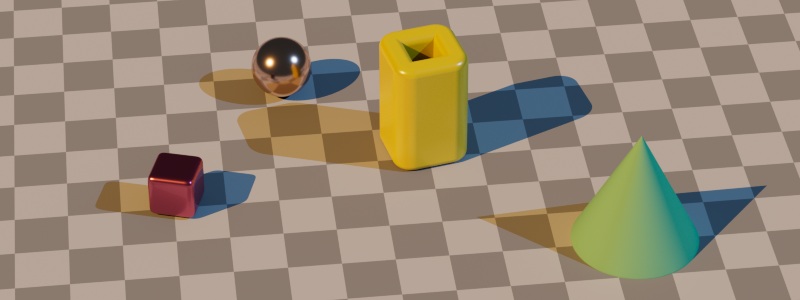
Fast interactive direct lighting
The direct lighting for up to 8 analytic lights is calculated at once, allowing fast navigation with noise free direct light even at 1 sample per pixel:
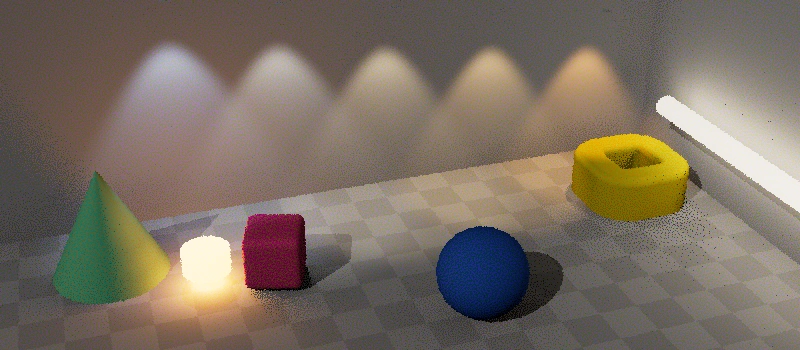
Composite texture adjustment layers
The composite texture now supports adjustment layers that can be used to fine-tune the composite at a specific point in the layer stack. The list of layers includes color adjustment operations and a number of utility operators. These adjustment layers can either process the intermediate result produced by the layers below, or they can be attached to a specific layer to adjust only that layer's input.
Additionally, layers can be grouped into isolated or non-isolated (pass-through) groups. The first type composites the layers in the group onto a transparent background before finally compositing the output of the group with the other layers in the stack. The latter uses the current state of the texture stack as the group's background.

More adjustment layers are coming...
Output AOV compositor improvements
Output AOV nodes have been revamped to be layer-based, and there is a selection of effect layers available. For example, to add bloom to a render AOV, you can add a "Render AOV" layer and then add an "Add bloom" layer on top of it. With the effects available, you can do everything the existing fixed-function imager and post processing system can do, and more. Things like tone mapping, LUTs and OCIO view transforms are simply effect layers and can be applied in any order.
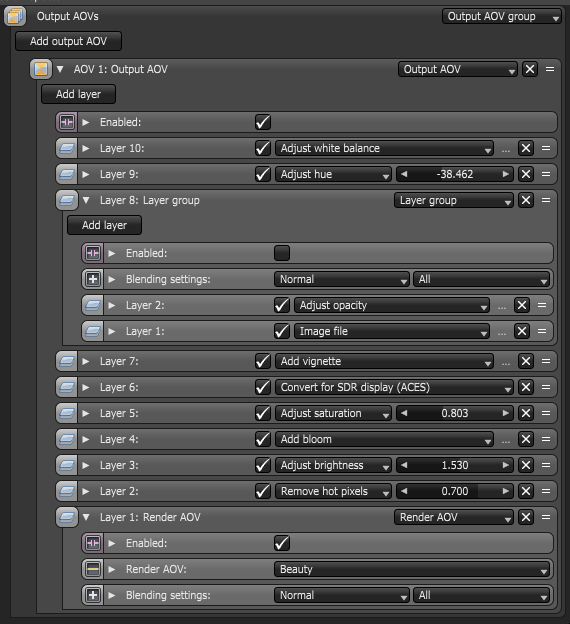
More effects are coming, such as Blur (which can be used to build effects like sharpen), Curves, and a tone mapping solution that works better for saturated bright colors.
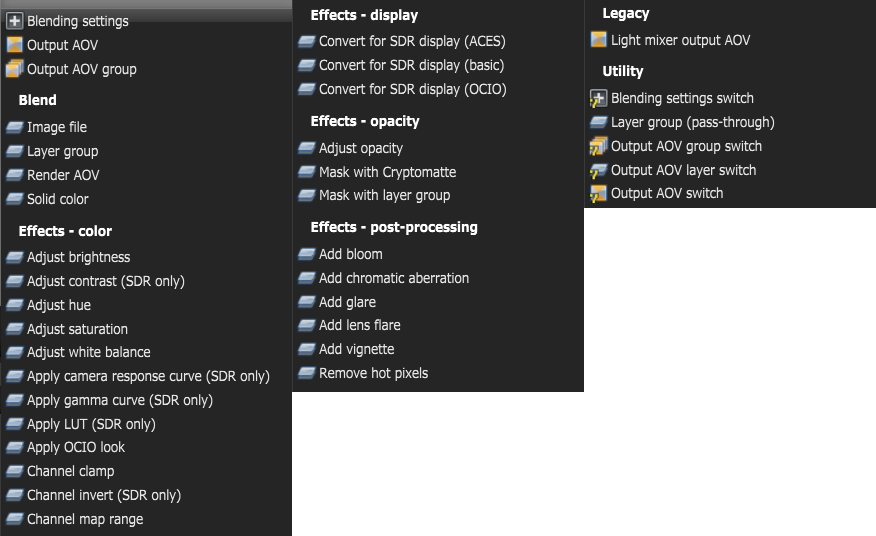
Fast post media rendering
We have added a post-processing pass to add fog. This provides a fast and noise free way to add fog to an image without rendering a large amount of samples. The effect includes fog, and beams from light sources or sun light.
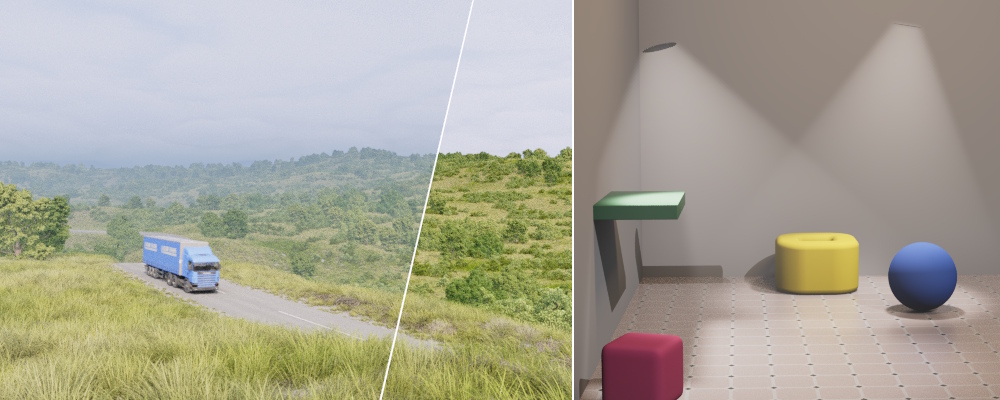
We also added chromatic aberration in post:
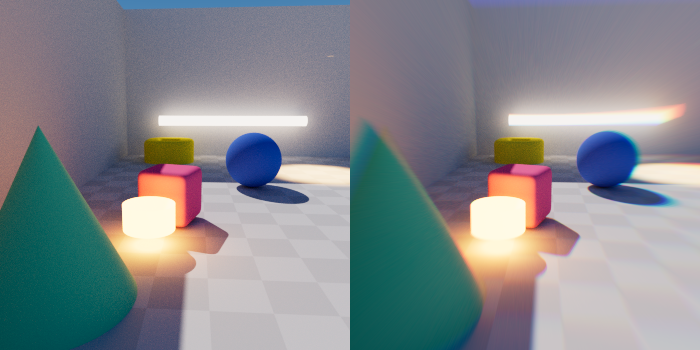
Also, a lens flare in post:
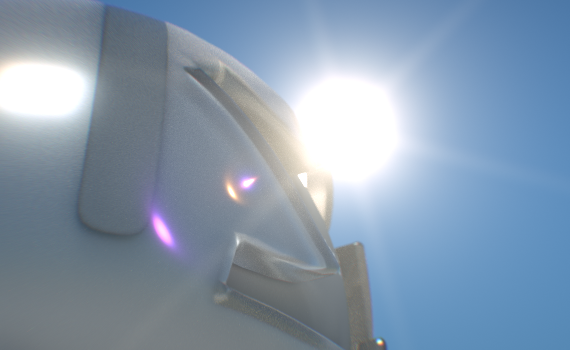
Limitations: at the moment, the Light beams effect only works when RTX is enabled. This will be fixed in a later update.
More additions and changes
Animation time transforms
We have added support for animation time transforms, which can be used by plugins as well. In standalone this can be useful for when you need to bring two or more animated files together and offset the animation times (or scale them).
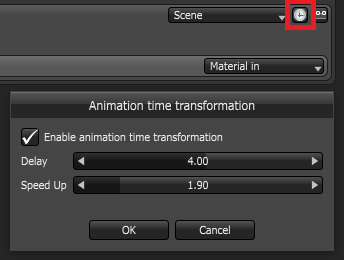
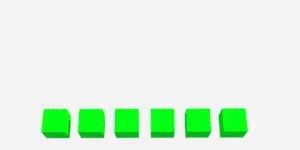
Improved accurate rounded edges shader
The accurate round edges shader now generates better results with edges with large angles. The new behavior will factor in the sharpness of adjacent edges only if the material's smooth flag is checked.
A new compatibility mode has been added to the node so scenes created with previous versions will remain unchanged and so the user can revert to the old behavior if they need.

Rendering improvements
- Improved appearance of diffuse transmission, and standard surface with subsurface, with scattering medium inside, if used in combination with nested dielectrics.
- All specular material layers and materials now use Abbe number.
- Added option to disable photon casting from the environment. Photon casting from the environment helps most when the environment has small bright spots.
- We now consistently use black as the background color of the Composite texture and don't treat the bottom layer specially.
- Material layer nodes can now be selectively disabled via a new "Enabled" input pin.
- Material inputs of the Composite material node can now be selectively disabled.
- Improve tone mapping for HDR viewport on macOS.
- Added light passes 9 to 20.
- Added smoother cubic spline option to gradient nodes.
- All material types now have the same set of diffuse BRDF options. Also, the meanings of "Octane" and "Lambertian" were swapped. This is now fixed. A compatibility mode was added to the Diffuse layer node to produce the old behaviour of the input.
- Added switch nodes for all nodes. These can be used to animate graph changes.
- The height of a bump map can be specified directly using an input.
- Fixed incorrect motion blur evaluation in scenes mixing instances with and without motion when RTX was on.
- Post processing bloom and glare do not produce different results at different resolutions.
- Octane now always does compositing on the GPU. This trades off VRAM usage for more speed.
Rendering fixes
- Fixed denoised output for photon tracing with net rendering.
- Transmission depth input on standard surface now works with complex textures.
- Fixed incorrect rendering with nested dielectrics on surfaces with 0 opacity.
- Fixed double counted caustics where diffuse + transmission and specular intersect each other.
- Fixed OSL shaders not getting the specified default value instead of the identity matrix from transform inputs which aren’t connected.
- Fixed fast rounded edges not working when RTX is enabled and the smooth option of the material is disabled.
- Fixed Metal-denoised beauty pass being darker than CUDA.
- Scatter nodes are now handled in Vectron node trees.
- Fixed 0.5px centering defect on Sample Pos. to UV projection.
Stability
- Added
--sign-outcommand line argument. This signs out from your OTOY account, releases all licenses in use on the machine and exits. - Fixed possible crash on shutdown when deallocating proxy settings.
- Fixed a failure and data loss when updating a localDB thumbnail.
- Fixed render failure (stuck at 0 SPP) when a Layered Material only has an empty Material Layer Group attached to its layer inputs.
UI improvements
- Added more commands that can be assigned keyboard shortcuts, and improved the shortcut editor.
- Improved the dialog used to select UDIM and other tile grids.
- We now show render target name and zoom level in the render viewport title bar.
- Numeric boxes no longer grab scroll wheel input while scrolling
- Scroll bars and numerical boxes now respond properly to smooth scroll wheel input.
- Changed the scale of the Hue correction input on the Color correction, Jittered color correction and Color correction output AOV texture from [-1,1] to the corresponding degrees on the color wheel, i.e. [-180,180], and also allow values outside of this range to be entered.
Loading and saving
- Added Reload option for FBX files.
- Fixed saving corrupt image contents for large sizes caused by overflow.
There are many more minor changes, including UX, consistency and quality of life of standalone.
What's on the roadmap this year
Brigade active development
To have Brigade support the full matrix of features available in Octane is a significant challenge. Doing so without reducing performance or quality is also an important process. Features such as the analytic light adds great improvement to sampling, and is a natural addition to Brigade.
Right now the focus is on keeping the performance as high as possible.
Geometry pipeline overhaul
Octane 2023.2 will introduce a major update to its internal geometry pipeline. This is the way the application deals with input geometry data and prepares it into the optimized version that a GPU can use.
This allows for the following improvements:
- Faster renders with RTX support for hair, particles, and texture displacement.
Up until now RTX hardware acceleration was supported for static triangles as well as instances with motion. While this already provided a significant speedup in most cases, the remaining primitive types were still handled via software. The new behavior allows to further leverage RTX hardware to accelerate ray tracing of all supported surface primitive types. This will mostly benefit scenes with heavy use of hair, particles or texture displacement. We have put a special focus on optimizing both hair and particles with motion. Our experimental tests show that this new version can achieve 7x faster render times in scenarios with large numbers of moving primitives. - Quicker scene preparation times.
The process of preparing the input geometry data for being used on the GPU has been simplified and part is now executed on the GPU itself. This allows for shorter time to first frame and also reduced use of memory. - Cross-platform network rendering is back.
Network rendering is back to Octane on macOS, which also allows for machines from any operating system to be combined as render nodes in the same network.
Meshlets
The next generation out of core, streaming mesh geometry from SSD allowing rendering of enormous meshes with excellent fidelity and speed.
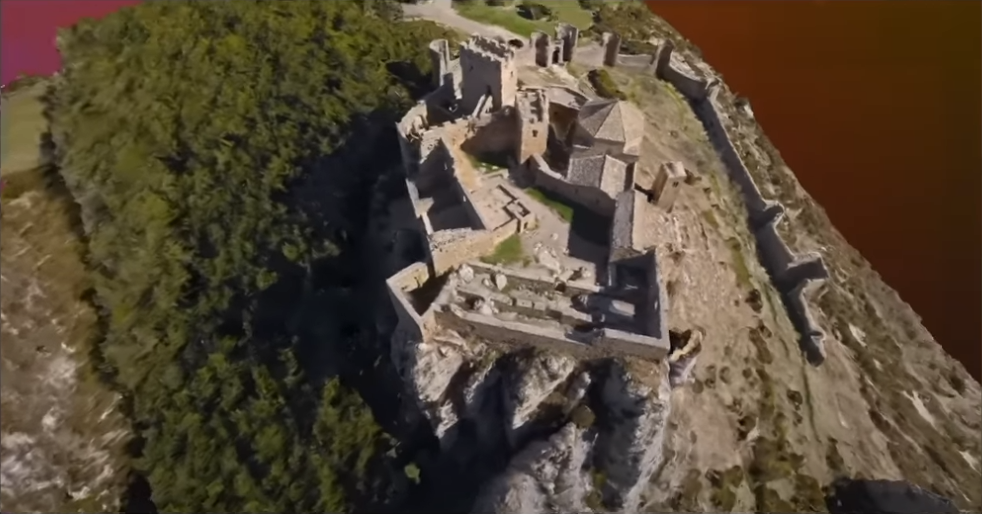
Others
We are also aiming to modify and improve the denoiser, which should give us the ability to also separately denoise light passes.
More improvements are coming to volume render, light linking, and materials. Camera improvements that are coming will include real chromatic aberration, normalized colored aperture textures and improved optical vignetting.
Also on our roadmap is to improve loading times and reduce file sizes particularly for ORBX.
Towards the end of the year and beyond, we are working on NeRF rendering, massive geometry support, trace sets, light path expressions, and full USD support.
Also in our plans:
- Volumetric user data
- Additive materials
- Rest position input
- Spectral fabric material
- Motion blur for HDRI environments
- Motion blur for texture displacement
- Adaptive subdivision for vertex displacement
- New parametric spline and curve primitives
- UVW packing for compiled DCC primitives (instead of UV). This can be used by plugins to "pin" procedural textures to deformed textures.
- Multi-stream: headless and live linked render across DCCs.
- Multi-render: swap to any other engine in seconds.
- Multi-engine: for example the full C4D application (with plugins) in Octane core, and also World Creator
- Photon tracing / irradiance caching
Downloads
Downloads for Studio+ subscription users:
OctaneRender Studio+ 2023.1 Alpha 1 Standalone for Windows (installer)
OctaneRender Studio+ 2023.1 Alpha 1 Standalone for Windows (ZIP archive)
OctaneRender Studio+ 2023.1 Alpha 1 Standalone for Linux
OctaneRender 2023.1 Alpha 1 Standalone for MacOS
OctaneRender Studio+ 2023.1 Alpha 1 Node Windows (installer)
OctaneRender Studio+ 2023.1 Alpha 1 Node for Windows (ZIP archive)
OctaneRender Studio+ 2023.1 Alpha 1 Node for Linux
Happy rendering
Your OTOY team


